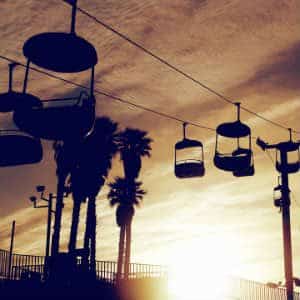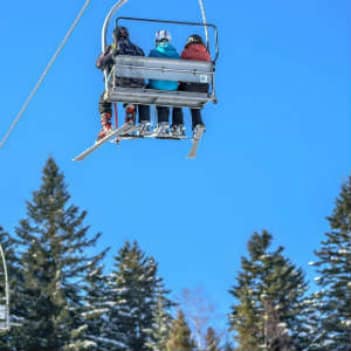Aerial lifts are common enough that most American’s have seen one if not used on. Anytime that a hill or mountain needs to be traversed, especially when the goal is to go up quickly and come right back down, chair lifts are commonly used. Although you can find chair lifts in amusement parks and even used as general transport, the most common place for people to use a chair lift is at a winter resort while on vacation.
Depending on the type and size of the lift, this form of transportation can move as many as 4000 people in an hour, although most ski resorts boast an average of 800 – 900 people an hour. This means that passengers are moving as quickly as 40 feet a second while dangling at great heights – not a great position to be in when something goes wrong.
If you or someone you love has suffered an injury caused by a chair lift, contact our vacation accident law firm today. We want to help.
Just recently, in January of 2017, a mother and her two daughters, aged 9 and 12, were riding a ski lift at a Colorado ski resort. When the three were about 25 feet in the air, the chair, which is hanging from a steel rope, suddenly left the normal path and struck a pole. All three of the passengers were thrown from the chair and fell to the hard, snow packed ground below.
The two girls survived although they both sustained serious injuries and had to be flown by helicopter for emergency treatment. Their mother, however, was not so lucky. She sustained several blunt force injuries which caused her aorta to rupture. She bled out internally in minutes and did not survive the accident, leaving her children and their father to mourn.
A safety board reviewed the accident and the first factors they ruled out were regarding weather, environmental factors, and the occupant’s actions. They found that none of these caused the accident. The actual cause was mechanical issues with the lift’s electrical drive and control system.
The resort was ordered to remove the electrical system and instead install a diesel one before the lift could be used again. In addition to this, an increase in regular inspections must be made.
In the majority of all chair lift accidents, a defect causes an issue. This defect could be anywhere – the steel cord, the chair, or the overall system.
When a defect causes an accident, there are typically three parties that could be responsible. First is the designer of the product, second is the manufacturer, and third is the owner of the lift, who is responsible for regularly checking the lift to make sure that the working parts are in good condition.
If the responsible party fails to create a safe product or maintain it, they can be held legally responsible for any injuries or deaths that happen as a result.
The operators of chair lifts can also create conditions that cause harm to others. When it comes to chair lifts, the biggest problems arise when an operator doesn’t fully check to make sure all passengers have gotten off of the lift.
In one case, a 14-year-old boy was left on a ski lift 30 feet above the ground. After the sun set, the temperature dropped to 14 degrees and the teen worried that he would freeze to death. Although he called for help, his cries were drowned out by the wind and snow making machines. Ultimately, he decided his only chance was to jump.
He lowered himself down as far as he could while hanging from the chair and then fell to the ground below. The fall broke several bones and caused him to pass out. He woke up later and crawled hundreds of yards to a lighted terrain park area where two skiers found him and called for help.
His family has filed a lawsuit against the ski resort on his behalf, seeking compensation for his experience and injuries.
The bottom line is, if another party caused a ski lift passenger to become injured, regardless of how they committed negligence, it may be possible for the victim to take legal action.
A chair lift lawsuit is a form of a civil lawsuit that can be filed when the negligence of one party leads to injuries in another.
In order to prove that negligence occurred, the plaintiff and their legal team need to prove the following:
The purpose of proving negligence and filing a lawsuit is to obtain monetary compensation for the plaintiff. This compensation should cover medical bills, lost earnings, physical pain and suffering and, in some case, even emotional turmoil.
If the victim doesn’t survive the accident and subsequent injuries, instead of a personal injury lawsuit, their surviving loved ones can pursue a wrongful death claim on their behalf.
For similar stories, visit: https://banvillelaw.com/vacation-travel-accident/winery-vineyard-tour/


